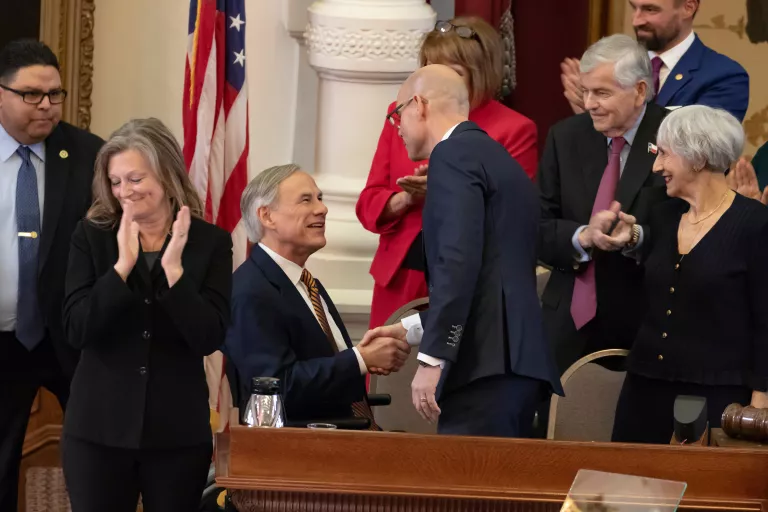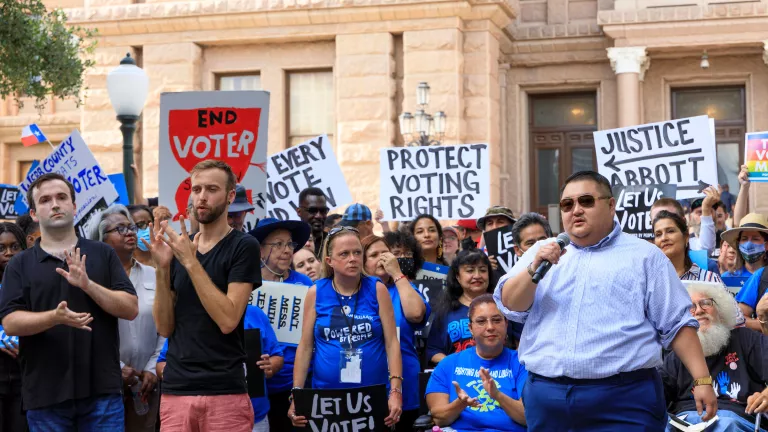About the Lone Star Chapter's Legislative Work
We are the oldest grassroots environmental organization in Texas. We believe our open spaces, clean water, and natural resources should be protected so that current and future generations may enjoy them. We accomplish our goals through direct and grassroots legislative and administrative lobbying, education, outings, litigation, and electing environmental champions to local, state, and federal office.
Sierra Club's Legislative Priorities
For the 2025 session, we’re focused on:
- Clean, reliable, affordable energy for all
- Air quality monitoring and standards initiatives
- Modernizing our electric grid
- Water protection standards and solutions
- Equity and priority in water infrastructure
- Opposing fossil fuel subsidies
Texans don’t back down from a challenge. When we work together, there’s no limit to what we can achieve for our families and communities. Click on each priority area to learn more about how we're building a future Texas deserves.
Get Involved: Visit Our Legislative Action Center!

How Does the Texas Legislature Work?
The Texas Legislature meets every two years to create policies and produce laws that impact all Texans. From energy reform to protecting natural resources, every session offers opportunities for citizens to advocate for meaningful change. The Texas Legislative session lasts 140 days, beginning in mid-January and ending in early June.
How a Bill Becomes a Law in Texas
The Texas legislative process is designed to ensure thorough debate and public input before any proposal becomes law. Here’s an overview of the key steps:
-
Bill introduction: A legislator in the Texas House or Senate sponsors a bill and files it with the respective chamber. Bills can originate in either chamber, except for revenue bills, which must begin in the House.
-
Committee review: The bill is assigned to a committee specializing in the relevant topic, such as energy, education, or public health. The committee can hold hearings to gather input from experts, lobbyists, and citizens.
-
Floor debate and vote: If the committee approves the bill, it goes to the full chamber for debate. Lawmakers discuss its merits, propose amendments, and vote. If it passes one chamber, it moves to the other for the same process.
-
Conference committee: If the House and Senate approve different versions of a bill, a conference committee negotiates a compromise. Both chambers must approve the final version.
-
Governor’s action: Gov. Abbott can sign the bill into law, veto it, or allow it to become law without a signature. The Legislature can override a veto with a two-thirds majority in both chambers.

How to Get Involved in the Texas Legislature
The Texas legislative process isn’t just for elected officials - citizens play a key role. Whether you’re speaking at public hearings, contacting representatives, or joining grassroots movements, there are many ways to make an impact.
Grassroots Organizing in Texas
From signing petitions to organizing rallies, grassroots advocacy drives the policies Texas needs. The Sierra Club Lone Star Chapter works alongside communities to amplify voices in support of responsible, equitable policy solutions.
Support Sierra Club's Legislative Agenda: Build a Future Texas Deserves
Texans want clean, reliable, and affordable energy, access to clean air and water, and representatives that put people over profit.
